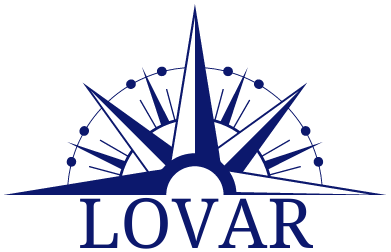Aerospace is a dynamic field that has seen rapid advancements over the past decade. From technological breakthroughs to shifts in operational practices, these innovations have not only improved efficiency and safety but also transformed the way we approach air travel and space exploration. This article explores some of the most significant aerospace innovations of the last 10 years and examines their impact on the industry.
Rise of green propulsion
The aerospace industry has seen a significant push towards greener propulsion systems over the past decade, aimed at reducing emissions and improving sustainability. Electric propulsion has more recently gained attention with prototypes like Pipistrel Alpha Electro and Harbour Air’s eBeaver, which are designed for short regional flights and demonstrate the potential of hybrid-electric and fully electric aircraft. These aircraft are quieter, more energy-efficient, and significantly reduce carbon emissions compared to conventional aviation.
In parallel, Sustainable Aviation Fuels (SAF) have become a promising alternative to traditional jet fuels. SAF is produced from renewable resources, such as plant oils and waste, and can potentially reduce lifecycle carbon emissions by up to 80% compared to conventional jet fuel. Airlines like United and Lufthansa have been early adopters of SAF, blending it with conventional jet fuel to reduce their carbon footprint. In 2022, ATR, Braathens Regional Airlines, and Neste achieved a milestone by conducting the first-ever 100% SAF-powered test flight on a commercial regional aircraft, marking significant progress toward decarbonizing aviation and advancing SAF certification.
Hydrogen-powered aircraft are also on the horizon, with ZeroAvia and Airbus leading the charge in hydrogen propulsion development. Airbus’s ZEROe concept, unveiled in 2020, aims to be the world’s first zero-emission commercial aircraft powered by hydrogen by 2035. This innovation could be a game-changer for long-haul flights and significantly reduce aviation’s environmental impact.
Advancements in autonomous flight
Autonomous flight technology has seen impressive progress over the last decade, bringing us closer to the reality of fully automated aircraft. Boeing has have heavily invested in developing autonomous systems for both cargo and passenger flights. Aurora Flight Sciences, a subsidiary of Boeing, has been testing autonomous aircraft systems for unmanned aerial vehicles (UAVs) and air taxis.
One of the most exciting developments has been in the drone sector. Companies like Zipline and Matternet have revolutionized supply chains by utilizing drones for medical supply deliveries in hard-to-reach areas. These advancements demonstrate how autonomous flight can not only streamline operations but also transform industries beyond just transportation.
3D printing in aerospace manufacturing
3D printing, or additive manufacturing, has revolutionized aerospace production by enabling the creation of complex parts with minimal waste and at a reduced cost. Companies like Colibrium Additive, a GE Aerospace company, lead the way in metal additive design, helping businesses overcome manufacturing challenges and improve outcomes with advanced machines and quality powders. EOS, a pioneer in industrial 3D printing, provides a holistic portfolio of services, materials, and processes for both metal and plastic parts, ensuring high-quality production and sustainable practices. Their integrated solutions give companies a competitive edge by delivering reliable, efficient, and innovative manufacturing options.
SpaceX and reusable rockets
Perhaps the most significant aerospace innovation of the past decade has been SpaceX’s reusable rocket technology, which has dramatically reduced the cost of space access. The Falcon 9 rocket, first launched in 2010, is designed to return to Earth after delivering payloads to space, making it the first orbital rocket capable of being reused multiple times. This breakthrough has lowered the price of space missions, making space exploration more accessible.
SpaceX’s reusable rockets have also been instrumental in launching satellites for both government and commercial entities, further expanding the role of private companies in space. By making space travel more affordable and sustainable, SpaceX has revolutionized the aerospace industry and set a new standard for rocket design.
The advent of supersonic travel
Supersonic flight, once considered a dream of the past, has experienced a resurgence in the last decade. Companies like Boom Supersonic have been working on the Overture, a supersonic jet designed to fly at speeds over twice the speed of sound (Mach 2.2), significantly reducing transatlantic flight times. This could bring back the era of supersonic travel, which was last experienced with the Concorde before it was retired in 2003.
However, the new generation of supersonic aircraft addresses environmental concerns by being quieter and more fuel-efficient than the Concorde. The Overture is expected to reduce flight times between New York and London to just three and a half hours, reigniting the potential for faster global travel.
The aerospace industry has experienced remarkable innovations over the past decade, each contributing to safer, more efficient, and sustainable air travel and space exploration. From electric propulsion to reusable rockets, these advancements are reshaping how we think about aviation and the future of aerospace. As we look ahead, continued investment in technology and innovation will be critical in addressing the challenges and opportunities that lie ahead in this ever-evolving field.

